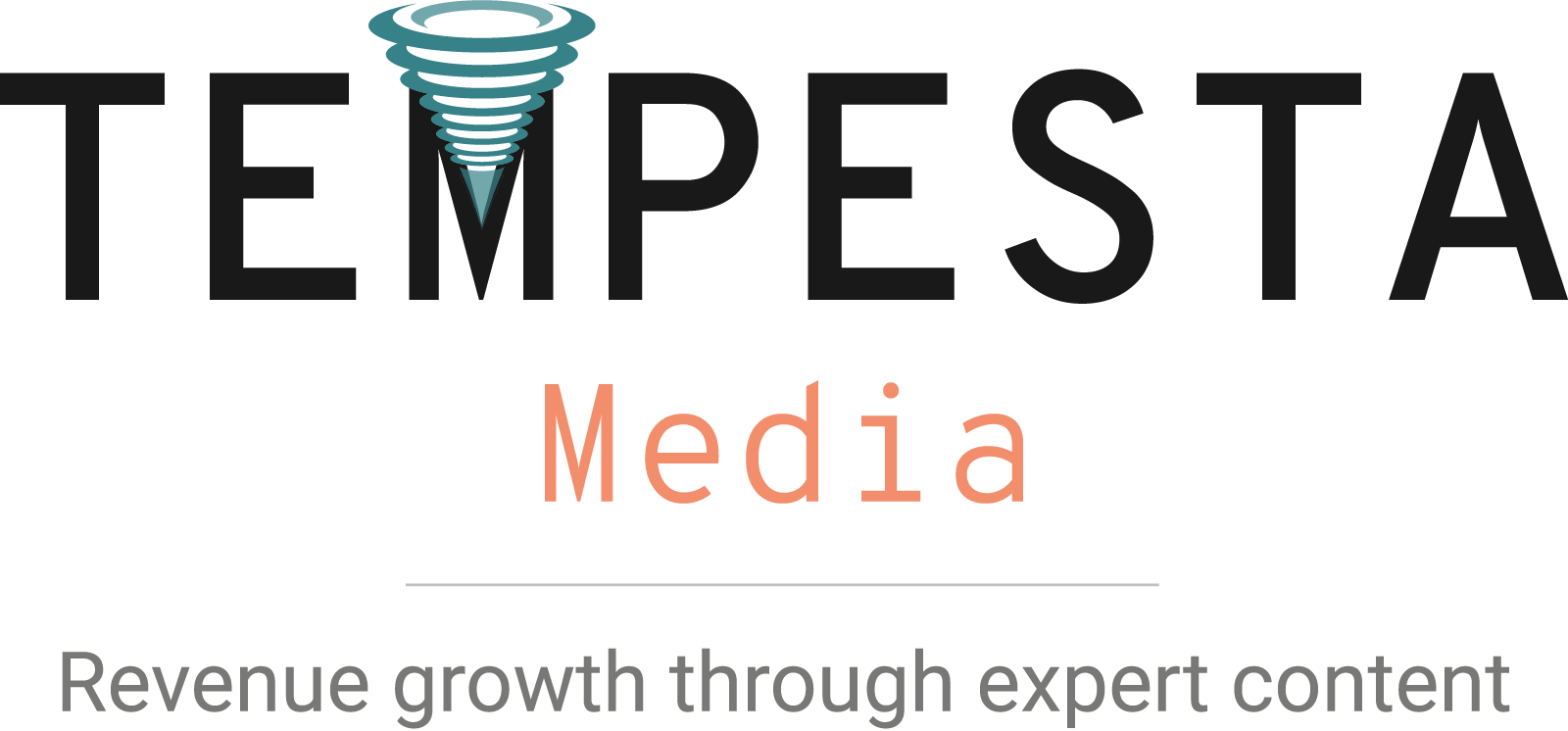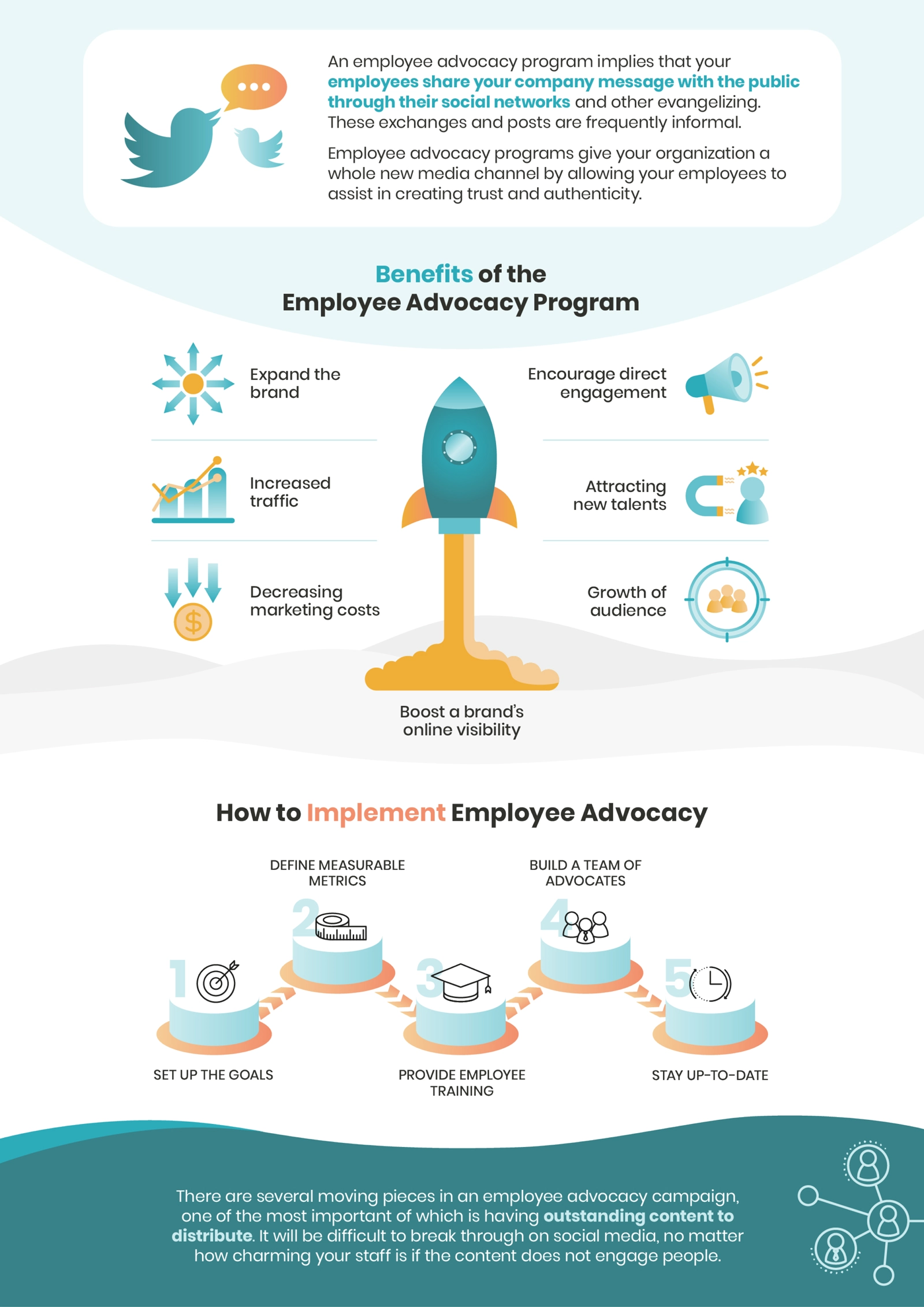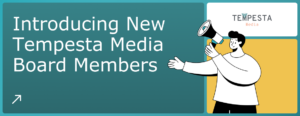What is an employee advocacy program, and why does your business need it?
A business can’t survive without its employees, and an employee advocacy program helps ensure you have the best team. These programs offer incentives to your employees that help promote your brand. Aside from the obvious benefits, you’ll find that your employees are often more loyal and invested in your brand.
Advantages of an employee advocacy program
About 54% of employees are not engaged in the company where they work, meaning they’re unattached to what they’re doing. At the same time, companies with emotionally attached employees are 24% more profitable. When you allow employees to communicate what they love about your company, you instill a sense of responsibility to help your brand succeed.
How to start an employee advocacy program
Company morale can boost your business’ image and build your brand. When a brand keeps its employees engaged, the entire company benefits. It’s as simple as setting goals, creating a policy, and preparing your employees.
Once you’ve established these areas, you can plan your training. Identify your biggest champions to get the ball rolling. Friendly competition makes the program more fun. Make sure to let employees know there are rewards as well.
Before you launch your program, have some content prepared ahead of time. Remember to be flexible and keep it in good taste. If you don’t want to take time away from your in-house employees, you can always hire a managed content provider.
Launching your program
When you’re ready to launch, you’ll want to make sure you have an easy way to measure results. It’s important to measure the success of the program along with employee participation and compliance. Making adjustments is often needed and a great way to make sure the program is successful.
Benefits of an employee advocacy program include:
- Achieving business goals
- Driving quality leads
- Increasing social media reach
- Building employee trust, and much more
Read this complete eGuide that will walk you through each detail of building your employee advocacy program:
Introduction
An employee advocacy program is essential for brands to reach a broader audience on social media with authentic messages and foster positive employee engagement. If it sounds a little overwhelming to do this on your own, the good news is that you don’t have to. Explore the intricacies and benefits of an employee advocacy program below to learn how you can leverage one for your success.
What is an employee advocacy program?
Companies that have an engaged workforce have an effective marketing tool at their disposal. At the most basic level, employee advocacy programs incentivize your workforce to promote your company online. They help channel the enthusiasm employees feel about their work into powerful testimonials for your mission and products.
Beyond just a marketing tool, this is also an important part of your human resource efforts. Companies that effectively use employee advocacy programs help fuel positive feelings about the work their employees are doing. This translates to more productive workers and higher levels of engagement and loyalty.

Gallup’s annual survey of worker engagement found that the percentage of employees who are “actively engaged” in 2020 dropped to its lowest point (31%) after reaching its highest point (38%) just last year.

54% of employees are not engaged — meaning they are unattached to the work they are doing.

In Gallup’s Q12® MetaAnalysis, companies in the top quartile for employee engagement were 23% more profitable than those in the bottom quartile.
What are the advantages of employee advocacy programs?
An employee advocacy program can help people on your team focus on the parts they love about your company and share them. Giving people the power to share their personal experiences gives them a sense of ownership in the company’s success moving forward. It also gives them a feeling of responsibility to help the company succeed.
When you engage employees in promoting your business, you also receive tangible benefits to your bottom line.
1. Achieving business goals
One of the most critical parts of any content marketing strategy is your reach. You can create a lot of content, but if it’s not reaching the right audiences, it’s essentially a waste of your team’s time and resources.
As a marketing leader, you understand the challenges of getting everyone on board with content marketing and social media strategies. You also know how important it is to be authentic on social media in order to achieve your business goals. It helps you build better relationships with your audience, develop trust and grow customer loyalty.

Growing your social media reach
When a marketing team spends a lot of time on content that nobody sees, is rustrating. You could pay for that content to reach more people, but you have an untapped social media promotion vehicle right in your company: employees.
The average Facebook user today has 338 friends, and the average Twitter user has 208 followers. In a company with 100 employees, that means you have the potential to reach 33,800 Facebook users and 20,800 Twitter users without paid ads.
People also trust content from someone they know much more than they would trust content from a business. Your employees can naturally start conversations about your business, which are more authentic than the company trying to start the same conversation. In fact, Nielsen research reveals that 92% of people trust a recommendation from a friend or family member, which far outpaces any other type of advertising.
Improving your image
Generating quality leads
Media consumption today is fragmented, and getting your message in front of a lot of people is expensive if you have to pay for all that advertising. For consumers, it’s often easier to tune out all the “noise” than try to sort through it.
People can curate their own information sphere through social media. They pay more attention to the information coming from people within their circle than ads.
Your employees are also customers and consumers, so a recommendation from them can be a more targeted way to generate quality leads through their own personal networks. Those will show up on your bottom line.
2. Putting your faith in employees

At the heart of a successful employee advocacy program is trust. The company is asking employees to use their own expertise and influence to build the brand. This demonstrates that you have a lot of faith in your people.
This type of trust translates into confidence in their knowledge, a stronger desire to perform well and a more engaging environment. In fact, employees at socially engaged companies are more likely to feel optimistic about the future of the company and are more likely to stay there (which HR will like).
3. Providing customers with real interaction

How to create an employee advocacy program
Before you launch an employee advocacy program, it’s important to start with a plan. Set goals and create policies to help people understand how to take part and what benefits are available when they do. Employee advocacy programs cross over into both marketing and HR, so it’s critical to include leaders from both departments.
A structured employee engagement plan provides the right incentives for those who are eager to share content. It also offers the right training and tools to those who want to share but might not fully understand how.
1. Set your goals
The first step in creating an advocacy program is having clear goals of what you want the program to accomplish. Simply saying “We want our employees to share more of our content on social media” is not enough. As with all business goals, you need to identify those that are:
SPECIFIC
MEASURABLE
ACHIEVABLE
REALISTIC
TIME-BASED
For example, you might set a goal to have 30% of your employees participate in your advocacy program training within the first year. Make sure goals are aligned with your brand priorities and messaging. Coordinate everything with your content calendar so the information you are putting out from your corporate brand and the information coming from your employees is seamless and complementary.
2. Set up the policy
Next, you need to have a policy that clearly outlines:
- What is allowed and not allowed.
- What is expected.
- Guidelines to help employees get started.
- Ways employees can provide feedback to your team.

Starting an employee advocacy program that encourages employees to use social media to promote your company can feel a little scary. Your marketing team will have to let go of some of the control they have over the brand message that is going out. HR teams will lose a little bit of control over how employees talk about the company online.
Some companies worry a lot about the risks and try to create rigid standards. But this makes it harder to recruit employees into your advocacy program. (They don’t want to get in trouble or cross a line and risk losing their job.)
Plus, strict rules take individuality out of the program and out of your employees’ natural behavior on social media. This can make their posts seem less authentic (and more sales-y).
The right policy creates a balance between giving people direction and allowing them the freedom to share it in ways that make sense for their social media feeds. It may be a learning curve, so you can work with a managed content services provider like Tempesta Media. We have the right experience to help you create, monitor, manage and adjust as needed.
3. Prepare your advocates

Create a positive culture for advocacy
Identify “champions” and internal leaders
Positive peer pressure can be a powerful motivator. Finding and designating the natural leaders in your organization as “champions” of your employee advocacy program can help you recruit others who might be a little shy about participating. You can pilot the program with these champions for a short period of time to work out the kinks before launching it in the entire company.
Create and implement effective training plans
Training is the key to an effective employee advocacy program, but with a few caveats:
- Make sure the training is easy to access for all your employees, especially if you don’t all work in the same location.
- Create on-demand modules for people who have difficulty arranging their schedules to attend specific days or times.
- Make it long enough to provide the information but short enough that it’s not a burden.
- Provide information about the what, why, and how: What do you want employees to do, what’s in it for them, why is this important to the company and how can they get started?
If you don’t have the internal resources to create this type of training, work with a partner like Tempesta Media. Our employee advocacy program solutions are ready to go and scalable for organizations from 1 to 100,000.
Publish and share clear guidelines
Help your employees learn how to fit your brand into their personal ones and advocate for it in an effective way that highlights their voice while staying within your company guidelines. It’s important to have this information clearly available and accessible to everyone in the program.
Make it rewarding
4. Prepare content

Someone’s social media feed is a personal tool, and if they’re allowing you to be a part of it, the content and messages need to be valuable to their audience. That doesn’t mean you should never mention your brand (of course you should – the point of these programs is to build your brand online), but it does mean you need to be careful about how your brand is incorporated into each post.
If you aren’t quite sure what types of content people would feel comfortable sharing, consider sending out a short survey to ask. Identify your team members’ personal values and interests to create content that aligns with them.
Here are some general rules for creating the right types of content:
- Use human interest stories about your people or ways your products and services are changing and improving someone’s life.
- Provide educational content that teaches something people didn’t know before or might be curious about.
- Show employees participating in local community events like volunteer work or local parades.
- Share industry research or breaking news that is relevant to your audience.
- Create fun content that has nothing to do with your brand but will make people smile. Make sure this content matches your brand voice and doesn’t stray into hot-button issues that could create controversy (unless that is your brand).
- Offer “behind the scenes” content. For example, you can show how products are made or show someone who people would instantly recognize (like an executive) in a situation that is relatable to an average person. These can be powerful recruiting tools for talent too. By highlighting an employee on a trip to a foreign country or spending time with their family at a local museum on their paid days off, you portray the environment your company strives to maintain.
Create content before you launch
Before launching your employee advocacy program, it’s a good idea to have some initial content planned that you can roll out over the first few weeks. This ensures that you don’t get behind and have gaps in content to share. However, it’s also important to be flexible and prepared with new content as current events and conversations change so you don’t sound tone-deaf by posting something that isn’t tasteful or timely.
If you’re worried about whether your internal team has the ability to keep up with all the content, working with a managed content services provider is a great way to get carefully curated content that aligns with your goals and won’t require any of your internal team’s time. It’s the perfect solution for small businesses, marketing teams or time-crunched groups that already have a lot of work on their plate.
5. Measure results and make adjustments
It’s important for your employee advocacy program to have clearly outlined metrics to measure to determine the results and evaluate the success of your program. Some overall metrics to track include:
- The number of employees who complete your training program.
- The number of employees participating in the program.
- Total content shared by all employees.
- Total engagement on all posts shared by employees (likes, shares, comments, clicks).
- Increase in web traffic from employee-shared content. You can measure this by using unique URLs for landing pages in your employee-shared content or getting a baseline for total traffic to your site through social media and measuring how that increases.
If you’re offering incentives — and you should be — you also need an objective way to measure participation and compliance with the program. On an individual level, you need to measure:
Ready to get started on your employee advocacy program?
Advocacy programs enable brands to reach a larger audience on social media with genuine messages, and they encourage positive engagement. Even with these great benefits, the process is nonetheless a big undertaking. Tempesta Media can help.
We offer a turnkey employee advocacy program that you can scale to any-sized organization and customize to match your brand voice and meet your needs. It includes tools for offering incentives if you choose to do so as well as in-depth reporting and data analytics tools for HR and marketing (engagement, program performance, ROI, paid media equivalency and more). You can have everything you need to amplify your brand’s presence online.
Explore our customer success stories along with impressive results. Download and read our case studies.
Contact us today to learn more.












